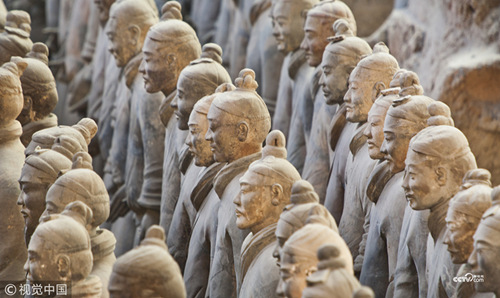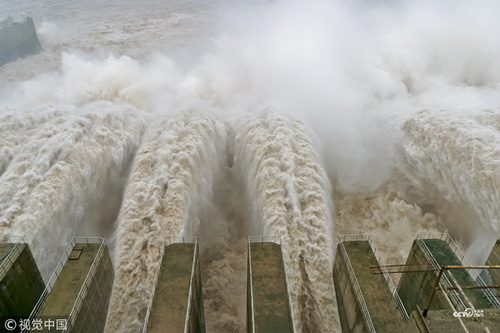By Tom McGregor, commentator and copy editor
Editor's note: 2018 marks the 40th anniversary of China's 'reform and opening up' that opened the doors for a more prosperous China that helped hundreds of millions of Chinese citizens escape poverty as the nation had enjoyed rapid economic growth and development. CCTV.com takes a closer look at Beijing's comprehensive reforms with a series of special reports focusing on various fields where tremendous changes have taken place ever since the introduction of the policy.

China’s eastern region has enjoyed remarkable economic growth and rapid development since the reform and opening up policy that had been introduced by the late Chinese leader Deng Xiaoping 40 years ago. Nevertheless, large swathes of western China remain underdeveloped with isolated villages and farmlands dotting the landscape.
China as a nation has boosted its nominal GDP (gross domestic product) to emerge as the world 2nd-largest economy and if high-annual GDP growth rates continue on, the country could surpass the US within about 20 years as the biggest economy in our world.
Yet, the imbalance between western and eastern China remains wide. Hence, Chinese officials when talking about the push for greater progress in Western China, describe the scenario as an eagle that has to have two strong wings to fly faster and higher.
In August this year, Chinese Premier Li Keqiang held a formal meeting with the Standing Committee of the Political Bureau of Communist Party of China Central Committee to discuss new measures to boost economic growth in Western China.
Premier Li urged officials to focus on industrial upgrades, support entrepreneurship, innovations, while marching ahead on new construction projects to spur not only growth, but would give added incentives for migrants to return to their hometowns in order to reduce over-crowding and traffic congestion in Eastern China’s cities.
Despite the nation’s huge population and mega cities, much of western China stands under-developed and that means opportunities for property developers to urbanize this half of the nation.
According to the Website of China’s Foreign Ministry, China’s western region covers the provinces - Shaanxi, Gansu, Qinghai, Sichuan, Yunnan and Guizhou, as well as the Autonomous Regions of Ningxia. Xinjiang and Tibet. Western China accounts for 56% of total land, but less than 1/4 of the nation’s population reside there.
However over 50% of all mineral resources can be found in Western China and plenty of energy, such as oil and natural gas reserves are still underground, especially in Sichuan Province and Xinjiang Autonomous Region. Building more power plants and adding to the transmission grid can spark the rejuvenation of Western China.
For investors, the region holds big market potential with strong labor power, abundant natural resources and low investment costs. Yet, logistics had been a challenge in past. But nowadays, Beijing has constructed more infrastructure, including new roads, highways, bridges, railways and airports to make transporting goods more efficient and faster.
Premier Li last month spoke about the new projects that are underway in Western China that includes the Sichuan-Tibet railway, power grids, oil and natural gas pipelines, fiber-optic IT cables and dams. By urbanizing the west that can upgrade education, health care and public services in the region.
You can expect to see more cities propping up in Western China, but it will not lead to catastrophic pollution levels, since government officials will promote eco-friendly and sustainable development to enhance basic sewage and trash disposal.
For those who have never visited Western China or unfamiliar with the region, you will discover lots of beautiful natural landscapes here. There are huge mountain ranges in southwestern China, Sichuan and Tibet, vast sweeping deserts in northwestern China while many other parts of Western China have good land and climate for farming and livestock production.

A vineyard in Ningxia
In Ningxia alone, the region has garnered international acclaim for its vineyards. Yinchuan, Ningxia’s capital city has over 200 registered vineyards, while global experts believe the eastern slope of Helan Mountains are ideal for growing grapes to distill some of the world’s best wines.

Terracotta Warriors
The cities of Xi’an, Chongqing and Chengdu have become major hubs for science and hi-tech development for China. Chengdu has captured recognition for supporting innovative firms that develop smart technologies for healthcare. Chongqing is known for the Three Gorges Dam and Xi’an is considered the unofficial capital of Western China with its rich history and amazing tourist sites, such as the burial ground to the Terracotta Warriors.

Three Gorges Dam
Western China has plenty to offer for tourists, while it can be a land of opportunity for investors and the migrants willing to move back to their hometowns. Already, the e-commerce market is booming there.
On China’s Singles’ Day, when customers go online shopping annually on November 11, last year - rural customers in Western China had spent over US$500 million on that day, which was eight times the prior year’s figure.
Western China has just entered a more prosperous stage and many people in the region are likely to share the spotlight and enjoy the limelight of having better jobs and higher incomes for many more years to come.
(The opinions expressed here do not necessarily reflect the opinions of Panview or CCTV.com. )

Panview offers a new window of understanding the world as well as China through the views, opinions, and analysis of experts. We also welcome outside submissions, so feel free to send in your own editorials to "globalopinion@vip.cntv.cn" for consideration.
















